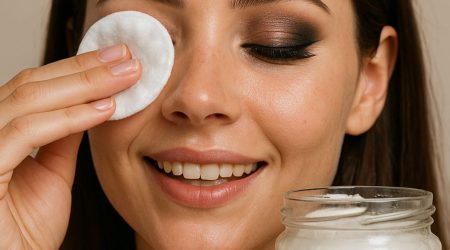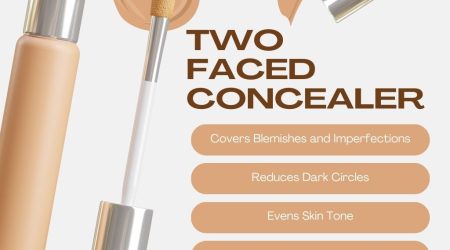16
May
makeup primer before or after sunscreen
Introduction:
Understanding the Skincare-Makeup Layering Dilemma One of the most frequently asked beauty questions is: should you apply makeup primer before or after sunscreen? With so many skincare and cosmetic products, it’s easy to get overwhelmed about the correct order. The layering technique directly affects how effective your products are and how long your makeup lasts. Understanding this routine is essential for maintaining healthy skin while achieving a flawless finish.What Is a Makeup Primer?
Purpose of Primer in Your Routine A makeup primer is a preparatory product applied after skincare and before foundation. It creates a smooth base for makeup, helps it last longer, and can even address skin concerns like redness, dullness, or enlarged pores. Types of Makeup Primers There are several kinds of primers tailored for different needs:- Mattifying Primers – Ideal for oily skin.
- Hydrating Primers – Best for dry skin.
- Illuminating Primers – Add a glow for dull skin.
- Color-Correcting Primers – Balance redness, sallowness, or dark spots.
What Is Sunscreen and Why It Matters
Chemical vs. Physical Sunscreens- Chemical Sunscreens absorb UV rays and convert them into heat.
- Physical Sunscreens (also known as mineral sunscreens) reflect UV rays away from the skin.
Sunscreen Before or After Primer: The Science
Dermatologist Recommendations According to dermatologists, sunscreen must always be the final step of your skincare routine but the first before any makeup application. Why Sunscreen Should Always Come First Applying sunscreen after primer can reduce its effectiveness. Primers may form a barrier that prevents sunscreen from fully absorbing into the skin, leading to patchy protection and increased UV exposure.The Role of Each Product in Your Routine
Primer’s Functionality Primers are cosmetic products designed to:- Improve makeup adhesion
- Minimize imperfections
- Smoothen texture
- Block UV radiation
- Prevent premature aging
- Lower skin cancer risks
Correct Application Order for Maximum Benefit
Step-by-Step Guide to Applying Products- Cleanse your face thoroughly.
- Apply toner (if part of your routine).
- Moisturize to hydrate and prep skin.
- Apply sunscreen (wait 2-3 minutes for absorption).
- Apply primer suited to your skin type.
- Finish with makeup products.
- Skipping sunscreen on cloudy days
- Using SPF-infused primer as a sole sunscreen
- Not waiting between layers
- Rubbing sunscreen instead of patting it on
How to Choose the Right Primer for Sunscreen Layering
Compatible Formulations Look for:- Water-based primers with chemical sunscreens
- Silicone-based primers with physical sunscreens
Best Practices for Long-Lasting Makeup and Sun Protection
Waiting Time Between Layers Let each layer set before applying the next. Wait:- 2–3 minutes after sunscreen
- 1–2 minutes after primer
- A setting spray for long wear
- A translucent powder if you have oily skin
Frequently Asked Questions
Q1: Can I use a primer with SPF instead of sunscreen? A: Not recommended. Primers rarely offer broad-spectrum protection and usually lack sufficient SPF levels. Q2: What if my foundation also has SPF? A: It can boost protection, but shouldn’t replace a dedicated sunscreen. Q3: Should I reapply sunscreen over makeup? A: Yes. Use a spray or powder SPF for reapplication without ruining makeup. Q4: How long should I wait after sunscreen before applying primer? A: Wait at least 2–3 minutes to allow sunscreen to settle and avoid pilling. Q5: What kind of primer works best with mineral sunscreen? A: Silicone-based primers often pair well with physical (mineral) sunscreens. Q6: Can layering these products clog pores? A: Not if you use non-comedogenic formulas and double-cleanse at night.Conclusion:
The verdict is clear: always apply sunscreen before makeup primer. Doing so ensures optimal sun protection and gives your makeup a better base. The correct layering order, proper waiting time, and product compatibility all contribute to healthy, glowing skin and a flawless look. By following these guidelines, you’re not only enhancing your makeup’s longevity but also prioritizing your skin’s health in the process. Don’t skip sunscreen—and let your primer do its magic after the UV shield is in place!Share this post
RELATED
Posts
How to prep your skin before makeup?
Your makeup is only as good as the canvas underneath. If you’ve ever struggled with patchy foundation, creased concealer, or uneven texture, the real culprit might not be your products—it could be your skin prep. Knowing how to prep your...
Is Coconut oil good for makeup removal?
If you're on the hunt for a natural, effective, and affordable makeup remover, you’ve probably heard about coconut oil. But is coconut oil good for makeup removal?
Yes—coconut oil is not only good, it's excellent for removing even stubborn makeup like...




